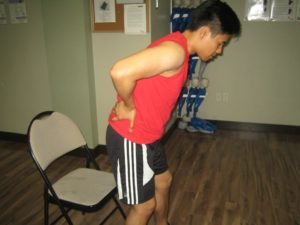The lower back muscle strains are likely to occur for various reasons and can be a weakened point that is about to occur. Remember that it is vital that muscle strains must be treated correctly since imbalances in the back can lead to issues later on. Participants registered in first aid classes will be taught the latest techniques in recognizing and managing muscle strains in the lower back.
Symptoms of lower back muscle strain
When a strain or tear to a lower back muscle occurs, it will lead to abrupt piercing pain with possible swelling or bruising over the area where the muscle ruptured. The individual will have difficulty in moving and likely to cause significant discomfort.
A close look on lower back muscle strain
It is important to note that muscle strains are graded as 1, 2 or 3 depending on the severity of the injury sustained by the individual.

- Grade 1 injuries involve tightness in the back and the individual might be able to walk properly and there is minimal swelling.
- Grade 2 injuries typically involve inability to walk properly and there are occasional twinges of pain during activity and there is evident swelling. When the site of injury is pressed in over, it will trigger pain.
- Grade 3 injuries involve inability to walk properly that is accompanied by severe pain and significant swelling that occurs right away. If the individual contracts the muscles back, it will instigate pain and might generate a bulge in the muscle. The individual could not engage in activity for 3-12 weeks or even longer.
Always bear in mind that muscle strains can occur in the back just like on any part of the body. A muscle strain in the back is typically caused by abrupt movement or lifting heavy objects. Take note that the low back pain often occurs gradually since the muscles in the back steadily tighten up due to poor posture and overuse.
The muscles go into spasm and will no longer receive enough blood, thus resulting to weakness. The gradual build-up of tension over weeks and months will lead to low back pain. In case the individual sustained a direct blow to the muscle, especially close to a bone, it should be managed as a contusion.
Treatment
The treatment for lower back muscle pain usually depends on the grade of muscle strain sustained by the individual.
Grade 1
When it comes to grade 1 back muscle strains, it requires rest. The individual should reduce the intensity of training for a week or two but there is no need to stop unless there is pain. You can also apply an ice pack for the initial 24 hours to reduce the pain.
The individual should opt for activities that do not cause pain. Remember that running is likely to worsen back muscle strain. It is recommended to utilize a heat retainer or back brace until there is no pain felt.
Grade 2
Rest from all activities is required and cold therapy is recommended in the acute stage. An ice pack must be applied 10-15 minutes every hour.
Sports massage electrotherapy and joint mobilization as well as manipulation will be used to hasten the recovery process. A full rehabilitation program is also started.
Grade 3
You have to apply an ice pack and seek medical attention. A period of complete rest is advised, especially bed rest. After the acute phase, the doctor might utilize sports massage, ultrasound, joint manipulation and electrical stimulation. A full rehabilitation program for the back is also advised.
